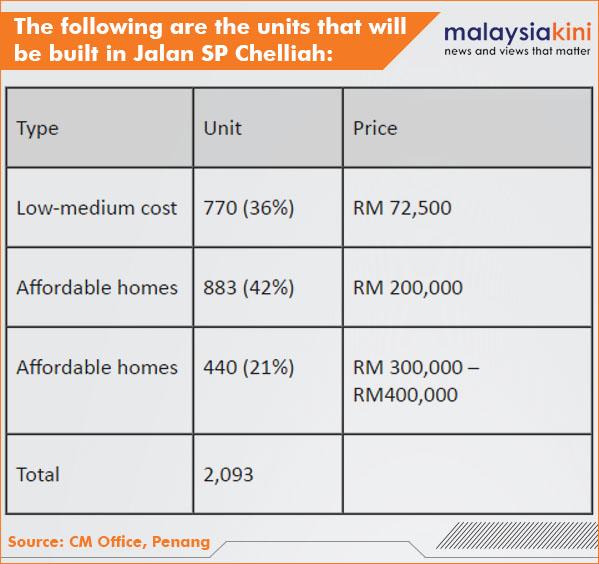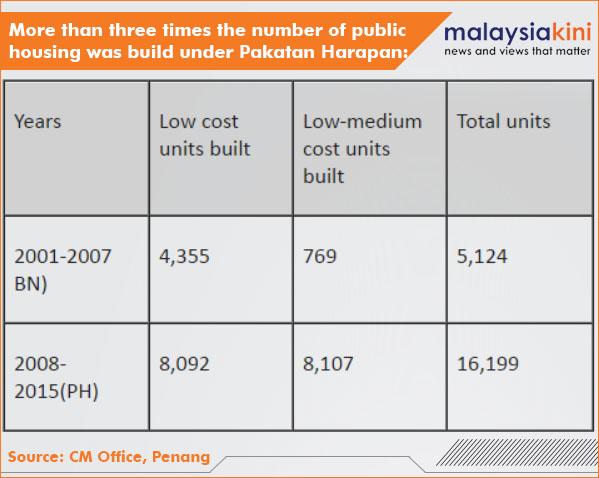Introduction
Umno and Barisan Nasional have been making various false accusations against the Penang state government and Chief Minister Lim Guan Eng over the sale of Taman Manggis land and the Chief Minister’s house. Through the BN-controlled mainstream media, the state government and the CM have been continuously attacked with false accusations. The following is the true story behind the issue.
Background of Taman Manggis Land
Taman Manggis land is located at the junction of Jalan Zainal Abidin and Jalan Burmah in George Town, Penang. According to a 2001 layout plan submitted by the National Housing Department (under the Housing Ministry) Taman Manggis was designated ‘for future development’.
A declassified Penang state exco minutes in 2005 shows that the BN state government had wanted to tender out the land to private developers for mixed-development projects with shop houses and government quarters.
Another exco minutes in 2007 shows that the BN state government rejected the federal government’s application to build public housing in Taman Manggis.
In 2010, Kuala Lumpur International Dental Centre (KLIDC) had purchased the 1-acre land which was earmarked as ‘future development’ via open tender to build a hospital to promote medical tourism.
For public and affordable housing, the Penang state government has allocated another 11-acre piece of land in Jalan SP Chelliah.
Open tender means awarding to the company that paid the highest price per square foot. KLIDC was the highest bidder in the open tender exercise.
The Penang State Tender Board that granted the bid to KLIDC is chaired by the Penang state secretary. The Penang chief minister is not a member of the tender board.
Accusation by BN against the Penang state government on the Taman Manggis land sale is not new. In 2012, Penang Umno Youth Chief Shaik Hussein Mydin had accused Chief Minister Lim Guan Eng of corrupt practices in relation to the sale of Taman Manggis land to KLIDC, but he later apologised before a High Court Judicial Commissioner in his chambers and withdrew the accusation against Lim Guan Eng in open court.
Background of Lim Guan Eng’s Bungalow House
1) In 2008, Phang Li Koon bought a bungalow house built in the 80s at No 25, Pinhorn Road, Penang for RM 2.5 million.
2) On July 1, 2009, a three-year tenancy agreement was entered with Chief Minister Lim Guan Eng and signed at RM5,000 rental per month. The tenure was later extended for another three years to June 30, 2015.
3) Because the renting of her house to Lim Guan Eng had resulted in BN and BN-friendly NGOs making false allegations against Phang, it had caused her undue stress. Thus, in early 2012, she gave a verbal agreement to CM’s wife, Betty Chew to sell them the house at RM2.8 million. Betty Chew then verbally requested Phang to give her more time, to which Phang agreed.
4) In 2014, Lim Guan Eng and Phang executed an agreement dated June 23, 2014 whereby she agreed to grant him a five-year option tenure to purchase the said property at RM2.8 million with a deposit of RM100,000.
5) Shortly before the extension tenancy expired on June 30, 2015, Phang decided to dispose off the property for good based on the understanding pursuant to the Option Agreement in 2014 pertaining to the agreed sale price of RM2.8 million. Lim financed the purchase through a bank loan of RM2.1 million and RM700,000 cash downpayment.
6) Phang felt uneasy about the demonstrations and funeral rites held in front of the house by pro-BN NGOs as well as Molotov cocktail thrown inside. The sale & purchase agreement was signed on July 28, 2015. The valuation for stamp duty by the federal government was for Aug 27, 2015 and was set at RM4.27 million.
7) There was a claim that the chief minister said he did not know the value of his house. That was taken out of context. The chief minister was asked what he thought of an allegation by Umno that his house was worth RM6.5 million. It was in response to that question that he said he did not know.
In Phang’s statutory declaration dated March 22, 2016, she emphasised that she was not pressured or forced by the CM or any party to sell her house at RM2.8 million, a price she agreed to in 2012 and subsequently confirmed in the option agreement in 2014. She sold it at her own free will on a willing buyer and willing seller basis. There was no special benefit gained by her for selling the house to him.
False accusation 1
On March 17, 2016, Umno MP for Tasek Gelugor, Shabudin Yahya accused in Parliament that Lim Guan Eng had bought his house cheaply and this was connected to the sale of government land in Taman Manggis to KLIDC.
Facts
Phang Li Koon has never been a shareholder nor a director of KLIDC. Her companies are not subsidiaries of KLIDC and KLIDC is not a subsidiary of her companies. Phang through a statutory declaration dated March 22, 2016 stated very clearly that she is “not a director nor shareholder of KLIDC... also not involved in the management of the company.”
False Accusation 2
Gerakan claimed that Taman Manggis land was sold cheap at RM11 million and the land could easily fetch RM22.4 million.
Facts
The Taman Manggis land was sold to KLIDC in 2010 by open tender for RM11.5 million. Two years later, in 2012, Gerakan claimed that the price was RM22.4 million and agreed to buy at that price. Gerakan created a ‘special purpose vehicle’, Taman Manggis Phase Two Sdn Bhd which it claimed had the RM22.4 million from unnamed sources to purchase the said land.
The company then paid 1 percent earnest deposit of RM224,000.00 to the state government but finally could not raise the 99 percent balance of the purchase price to pay the remainder RM22 million. The RM224,000.00 deposit paid by the Gerakan-owned company was forfeited by Penang state government at the end of 2012.
So far no one knows what happened to the RM22 million which Gerakan claimed to have raised for the purchase.
False Accusation 3
Now in 2016, Gerakan claimed that the Taman Manggis land was worth RM45.3 million in 2010 based on private valuation comparisons and that the government lost RM 33.8 million from selling the land at only RM 11.5 million.
Facts
The federal government's Valuation Department in 2009 valued the Taman Manggis land at RM8.5 million. It is impossible for the value of the land to increase by 500 percent in just one year from RM8.5 million to RM 45.3 million in 2010.
If Gerakan doubts the federal government's valuation then they should question the federal government instead of targeting the state government.
However, the best objective test of valuation is by open tenders. Unlike the federal government that does not practice open tenders, Taman Manggis was sold by open tender to the highest bid, which was RM11.5 million.
False Accusation 4
The previous BN state government accused the present state government of having sold the land that was planned for low cost housing (PPR) and why the land can be used for hospital but not for PPR.
Facts
One of the earliest documents is a plan by the National Housing Department (Jabatan Perumahan Negara) in 2001 which marked the Taman Manggis land as ‘Future development’. In other words, there was no specific low-cost PPR project planned.
However, minutes of Penang state exco meeting on Sept 28, 2005 shows that the BN state government wanted the land tendered out to private developers for a mixed development project with shophouses and government quarters.
According to the 2005 exco minutes, the then-exco member from Gerakan, Teng Chang Yeow. proposed that the Taman Manggis land be allocated for a mixed development project with ‘shophouses and government quarters’. The chief minister at that time, Koh Tsu Koon agreed and called for the land to be tendered out to private developers so that the state government did not have to bear the high construction cost.
Finally, on March 28, 2007, during an exco meeting, the BN state government officially rejected the federal government’s application to build public housing in Taman Manggis.
The density for commercial development is always higher compared to housing, not just in Penang but throughout Malaysia. Former federal housing and local government minister Chor Chee Heung said the minimum size of land for public housing should be at least 2 acres. Hence, it is normal that commercial development such as hospitals enjoy higher density and height limit not available to housing schemes.
False Accusation 5
Umno/BN claimed that the DAP-led state government has neglected building public housing in Taman Manggis.
Facts
There was no plan for public housing in the 1-acre Taman Manggis land even by the previous BN administration. In 2013, an 11-acre land at Jalan SP Chelliah was provided by the present state government to build 2,093 units of affordable housing (following federal government guidelines). It is about 10 times the size of the Taman Manggis land. Construction started in March 2015 and it is already 20 percent completed as of March 2016.

Under the Pakatan Harapan state government, more than three times the number of public housing was built compared to the previous Barisan Nasional state government in Penang.

False Accusation 6
On March 23, 2016, Urban Wellbeing, Housing and Local Government Minister Abdul Rahman Dahlan claimed that there is a sub-sale of the Taman Manggis land by KLIDC to ‘flip’ it to a third party for profit.
Facts
The land search title shows that the land title is still registered to KLIDC. If there is any attempt to sell the land to a third party, KLIDC has to get consent from the state government. Not only was no such consent given, there was no application by KLIDC to the state government.
False Accusation 7
On April 5, 2016 Abdul Rahman Dahlan changed his stance and now says that it was not the Taman Manggis land which was sold to a third party but rather the owner of KLIDC sold his shares in the company to a third party.
Facts
Companies Commission of Malaysia (CCM) records show that there is no change in KLIDC shareholding.
False Accusation 8
Abdul Rahman Dahlan also claimed that the state government has changed the Taman Manggis development to 30 percent hospital and 70 percent commercial purpose.
Facts
The land title clearly states the expressed condition as only for development of hospital (66 percent) and service suites/hotel (34 percent) to cater for patients and their families, which can only be rented out and not to be sold.
Penang is currently the top medical tourism destination in Malaysia, catering to about 50 percent of medical tourists in the whole country. According to the federal government, about 1,000 patients a day come to Penang to seek medical treatments. Hence, there is a need to expand medical tourism facilities in the state.
Conclusion
This is clearly an attempt to smear the impeccable reputation and run down the clean administration in Penang which has received praise by the annual auditor-general’s reports for its yearly budget surpluses and reduction in the state debts by 90 percent. Penang owes the least debt to the federal government, at RM69 million, compared for example, to Pahang's RM2.9 billion.
Furthermore, Penang is the only state government in Malaysian history to be praised by Transparency International in 2009 for practicing open tenders.
WONG KIM FEI is press secretary to the chief minister of Penang.

